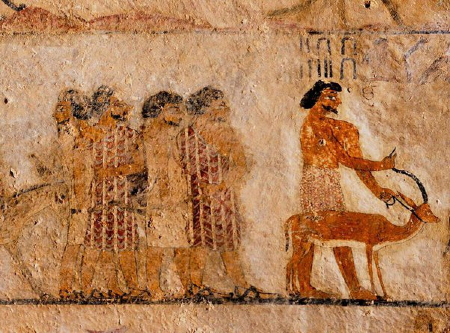 Hi readers, it seems you use Catholic Online a lot; that's great! It's a little awkward to ask, but we need your help. If you have already donated, we sincerely thank you. We're not salespeople, but we depend on donations averaging $14.76 and fewer than 1% of readers give. If you donate just $5.00, the price of your coffee, Catholic Online School could keep thriving. Thank you. Help Now >
Hi readers, it seems you use Catholic Online a lot; that's great! It's a little awkward to ask, but we need your help. If you have already donated, we sincerely thank you. We're not salespeople, but we depend on donations averaging $14.76 and fewer than 1% of readers give. If you donate just $5.00, the price of your coffee, Catholic Online School could keep thriving. Thank you. Help Now >
Vocation FAQ's
FREE Catholic Classes
- What is ordination?
- When does the ordination actually take place?
- Who can ordain priests?
- What is the meaning of the laying on of hands?
- Why does the ordinand lie prostrate during the ordination?
- What is the meaning of the newly ordained priest receiving the stole and chasuble?
- What does the anointing of the hands signify?
- Why does the ordaining bishop hand the ordinand a chalice and paten?
- How does one prepare for ordination to the priesthood?
- Do priests take vows?
- What is a Missionary?
What is ordination?
Ordination is the sacramental ceremony in which a man becomes a deacon, priest, or bishop and enabled to minister in Christ's name and that of the Church. There are three ordinations in the Sacrament of Holy Orders: deaconate; priesthood; and Episcopal. The ordination ceremony includes various rituals, rich in meaning and history, e.g., the prostration, laying on of hands, anointing of hands, giving of the chalice and paten, sign of peace.
When does the ordination actually take place?
The essential rite of the sacrament, i.e., when it takes place, is the laying on of hands and prayer of consecration. This is an ancient tradition in the Church, mentioned in the Bible.
Who can ordain priests?
Only a bishop can ordain a priest because he shares in the ministry of Jesus passed down through the apostles.
What is the meaning of the laying on of hands?
By this ritual the ordaining bishop and the other priests invoke the Holy Spirit to come down upon the one to be ordained, giving him a sacred character and setting him apart for the designated ministry.
Why does the ordinand lie prostrate during the ordination?
It symbolizes his unworthiness for the office to be assumed and his dependence upon God and the prayers of the Christian community.
What is the meaning of the newly ordained priest receiving the stole and chasuble?
These are vestments which pertain to his office and have symbolic meaning. The stole symbolizes the authority and responsibility to serve in imitation of Christ. It reflects the line from Scripture: "For my yoke is easy and my burden light" (Mt 11:30). The chasuble is the principal garment of the priest celebrating the Eucharist and is the outermost vestment.
What does the anointing of the hands signify?
Anointing with oil stems from the Old Testament and indicates that someone or something is being set apart for a sacred task or duty. The anointing of the hands signifies that the hands of the newly ordained priest are being prepared for the sacred duties and vessels which will be part of the priestly ministry, for example, offering the bread and the wine, anointing the sick and blessing people. The bishop says as he anoints the hands: "The Father anointed our Lord Jesus Christ through the power of the Holy Spirit. May Jesus preserve you to sanctify the Christian people and to offer sacrifice to God."
Why does the ordaining bishop hand the ordinand a chalice and paten?
The Eucharist is at the heart of the priesthood and this ritual highlights the importance of celebrating the Eucharist in the life of the priest and its meaning, as seen in the words which are spoken by the bishop: "Accept from the holy people of God the gifts to be offered to him. Know what you are doing, and imitate the mystery you celebrate: model your life on the mystery of the Lord's cross."
How does one prepare for ordination to the priesthood?
A man has to engage in a challenging program of priestly formation which lasts from five to thirteen years, depending upon his background and the seminary he attends. There are three levels of seminary: high school; college or pre-theology; and theology.
Seminaries address four types of formation: human; spiritual; academic (intellectual); and pastoral. In addition to the academic course work, seminarians participate in a full schedule of spiritual activities, e.g., daily Mass, Liturgy of the Hours (Morning Prayer, Evening Prayer), and spiritual direction and retreats. At each level of seminary training, the seminarian prepares for future pastoral ministry in various settings, such as schools, religious education programs, hospitals and parishes. All of the formation takes into consideration the human person; human growth and development is fostered by community living, workshops and other programs. The formation of future priests includes practical learning, too, for example, preaching, saying Mass, and pastoral counseling.
Do priests take vows?
Priests who belong to a religious order (e.g., Benedictine, Dominicans, Franciscans, etc.) take the vows of poverty, chastity, and obedience. Diocesan priests make two promises, celibacy and obedience; these promises are part of the ordination ceremony. It is also expected that diocesan priests will lead a life of simplicity consonant with the people they serve.
For recent statistics on seminaries and seminary students, please call the Secretariat for Vocations and Priestly Formation at the United States Conference of Catholic Bishops.
What is a Missionary?
A missionary is called to proclaim Christ through helping to create new Christian communities or assisting those that are just beginning in many parts of the world. The missionary also engages in the interreligious and intercultural dialogue of the Church worldwide. Finally, the missionary lives in solidarity with the poor through the work of justice, peace and the integrity of creation. Missionaries collaborate with the populations they serve to work for the common good in communion and solidarity with the local Church and in fidelity to the universal Church.
Provided by: Father Carl Chudy, SX , Provincial, United States Province, Xaverian Missionaries.
Vocations & Priestly Formation | © USCCB. All rights reserved.
More Vocations

Latest Vocation News
The Priesthood - It's Never Too Late Follow God's Call!

May and June are not just traditional months for weddings, but for priestly ordinations as well. No doubt, you've seen priests' social ... continue reading
Bishop Strickland's Pastoral Letter to Priests

December 21, 2023 - Saint Peter Canisius, Priest and Doctor of the Church My Dear Brother Priests,I pray that the last few remaining days ... continue reading
Spanish Theologians Honored with 2023 Ratzinger Prize for Outstanding Contributions

Two distinguished Spanish theologians, Father Pablo Blanco-Sarto and Francesc Torralba Rosello, have been awarded the prestigious 2023 ... continue reading
Religious Women to Hold First Advocacy Forum

The inaugural UISG Advocacy Forum is set to make history on October 23-24, 2023, in Rome. Under the theme "Religious Women: Leadership and ... continue reading
Pope Francis Warns Priests of the Dangers of Spiritual Worldliness and Clericalism

In a recent letter addressed to the priests of Rome, Pope Francis issued a solemn warning about the perils of spiritual worldliness, ... continue reading
Join the Movement
When you sign up below, you don't just join an email list - you're joining an entire movement for Free world class Catholic education.
-

-
Mysteries of the Rosary
-
St. Faustina Kowalska
-
Litany of the Blessed Virgin Mary
-
Saint of the Day for Wednesday, Oct 4th, 2023
-
Popular Saints
-
St. Francis of Assisi
-
Bible
-
Female / Women Saints
-
7 Morning Prayers you need to get your day started with God
-
Litany of the Blessed Virgin Mary
Biblical Lost Alphabet Traced Back to Ancient Canaanite Civilization
-

What are the Health Benefits of Grass-Fed Beef for Your Body and Mind?
-

Rise Above Poverty is Empowering Children and Families Through Education and Compassion
-
Artists and Leaders Rally to Preserve the Traditional Latin Mass
-
Republicans Demand Answers Over Army Training Slide Labeling Pro-Life Groups as Terrorist Threats
Daily Catholic
 Daily Readings for Wednesday, July 24, 2024
Daily Readings for Wednesday, July 24, 2024 St. John Boste: Saint of the Day for Wednesday, July 24, 2024
St. John Boste: Saint of the Day for Wednesday, July 24, 2024 Prayer for Travelers: Prayer of the Day for Wednesday, July 24, 2024
Prayer for Travelers: Prayer of the Day for Wednesday, July 24, 2024- Daily Readings for Tuesday, July 23, 2024
- St. Bridget of Sweden: Saint of the Day for Tuesday, July 23, 2024
- A Child's Prayer to Mary: Prayer of the Day for Tuesday, July 23, 2024
![]()
Copyright 2024 Catholic Online. All materials contained on this site, whether written, audible or visual are the exclusive property of Catholic Online and are protected under U.S. and International copyright laws, © Copyright 2024 Catholic Online. Any unauthorized use, without prior written consent of Catholic Online is strictly forbidden and prohibited.
Catholic Online is a Project of Your Catholic Voice Foundation, a Not-for-Profit Corporation. Your Catholic Voice Foundation has been granted a recognition of tax exemption under Section 501(c)(3) of the Internal Revenue Code. Federal Tax Identification Number: 81-0596847. Your gift is tax-deductible as allowed by law.











 Daily Readings for Wednesday, July 24, 2024
Daily Readings for Wednesday, July 24, 2024 St. John Boste: Saint of the Day for Wednesday, July 24, 2024
St. John Boste: Saint of the Day for Wednesday, July 24, 2024 Prayer for Travelers: Prayer of the Day for Wednesday, July 24, 2024
Prayer for Travelers: Prayer of the Day for Wednesday, July 24, 2024

